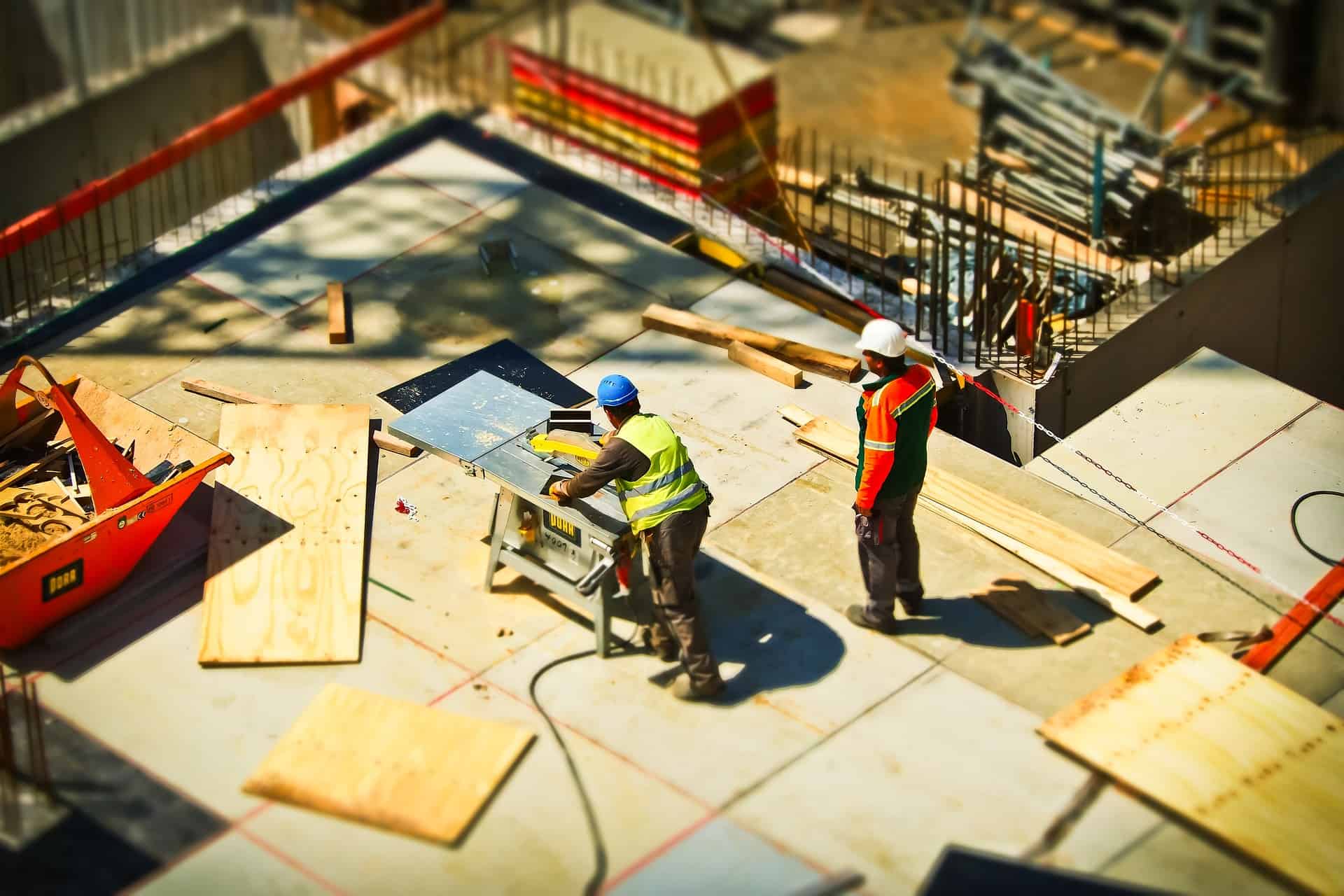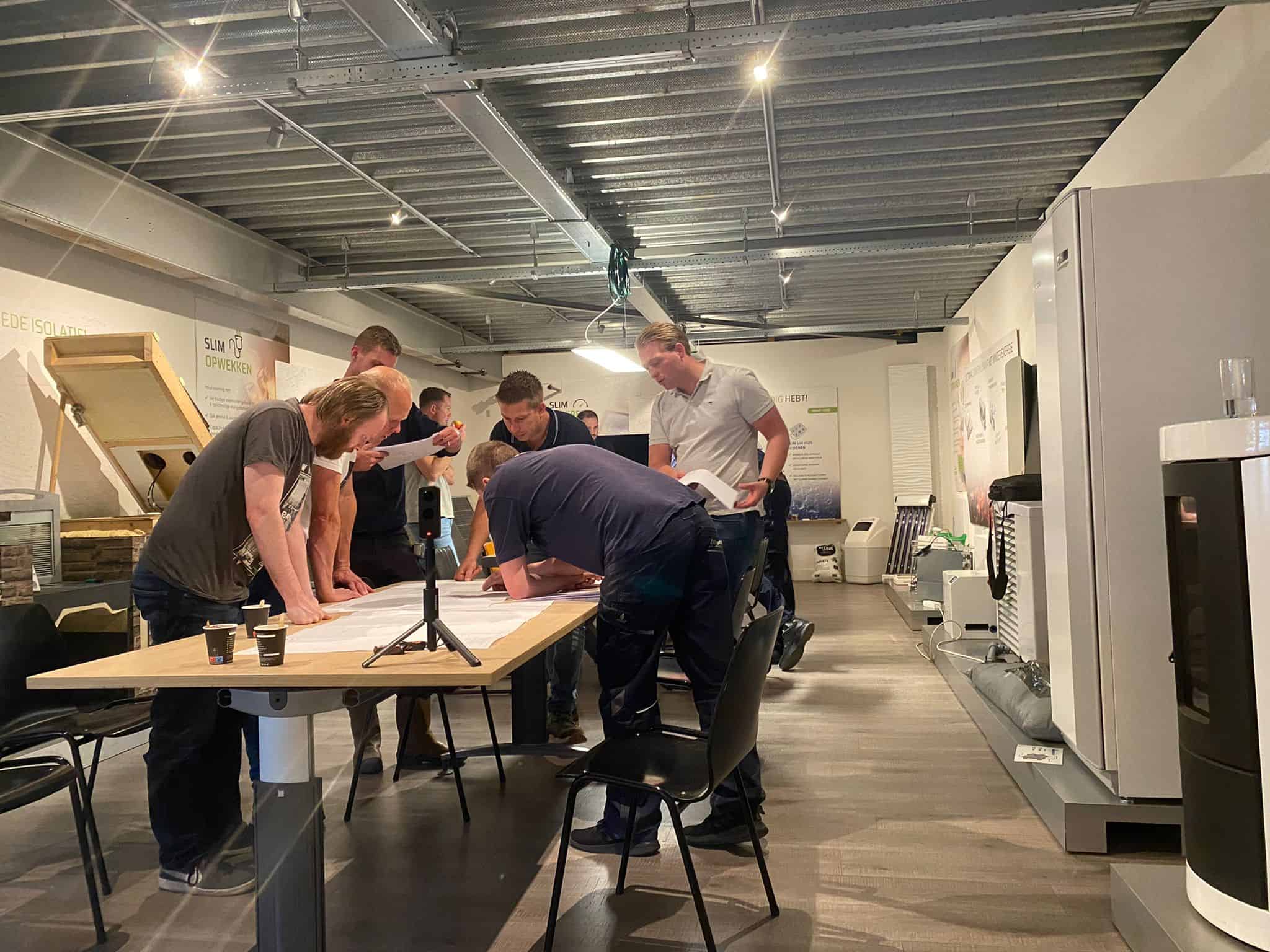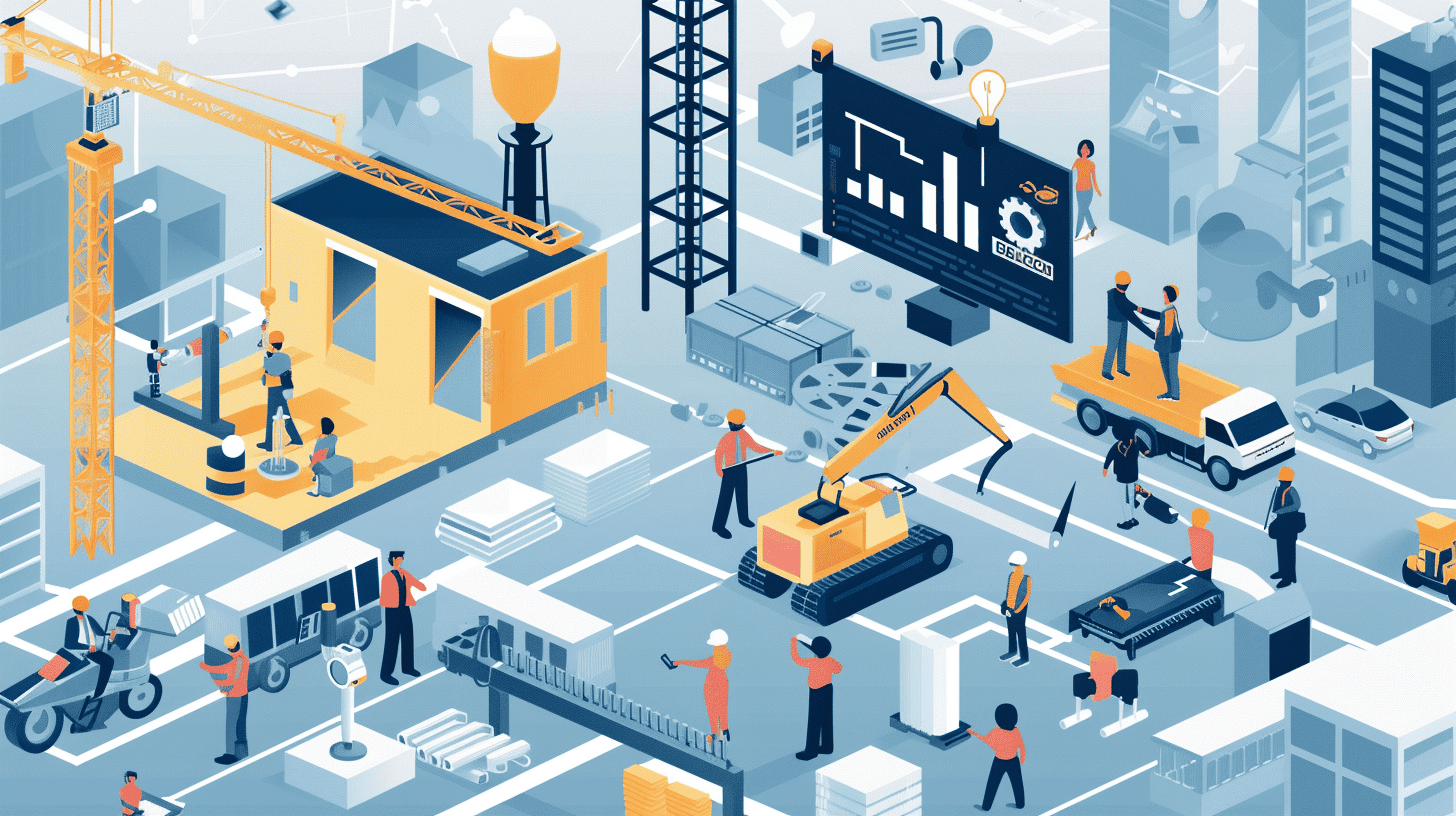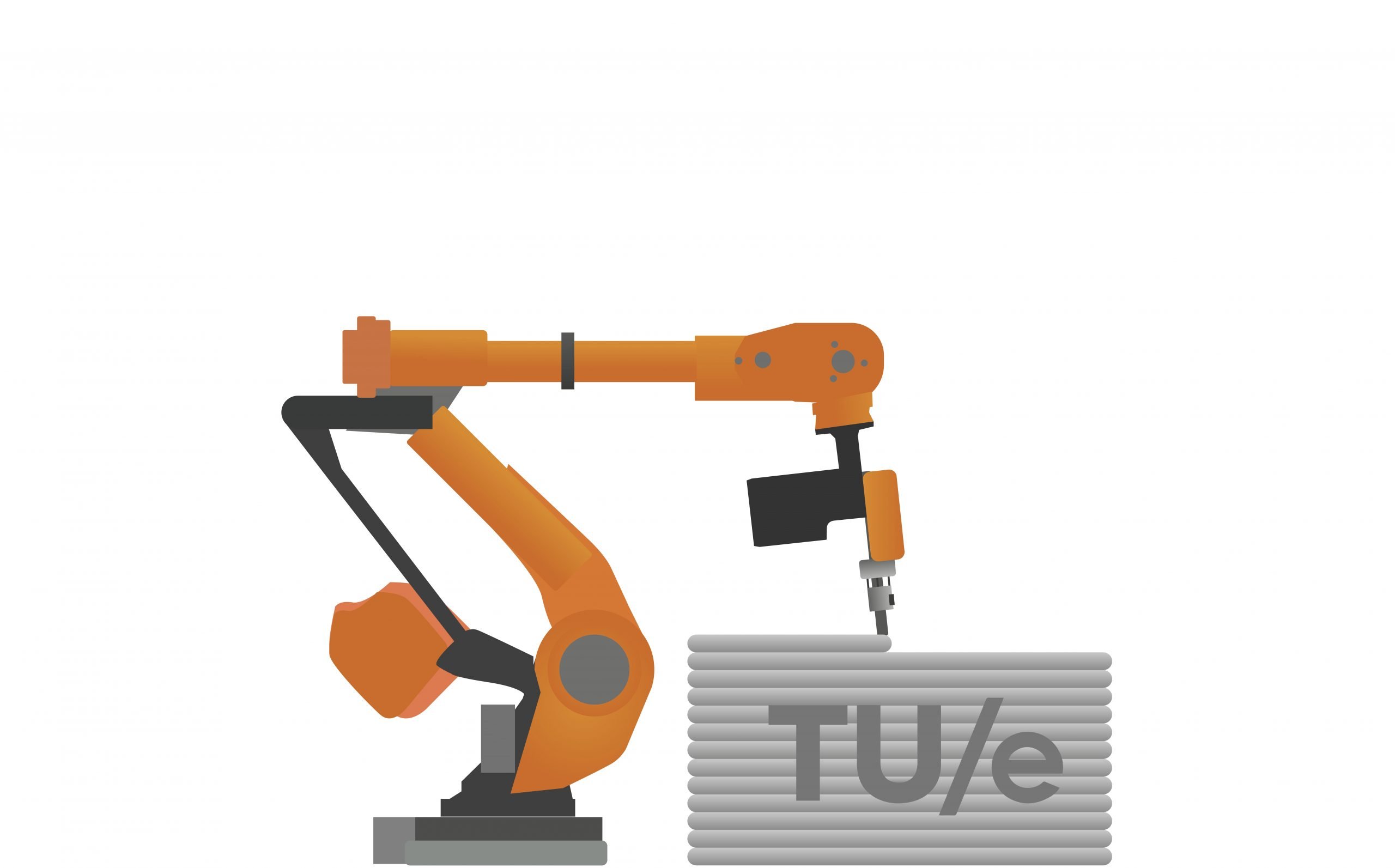
How are robots going to change the world? This is a frequently asked yet still unanswered question. After all, we don’t have a crystal ball. What we do know is that digitization and automation have changed the world enormously in recent decades. At Eindhoven University of Technology (TU/e), research is being done on a daily basis into the possibilities of smart machines in industry and daily life. Scientists dive into technology and student teams get to work on concrete solutions to social problems. In this series you will read about the newest robots, their background and their future. Today’s fifth article: construction robots.
“The assembly line is one of the reasons why car production is so efficient,” says researcher Rob Wolfs. According to him, such a process would also be useful for the construction of houses. “In construction, productivity is still relatively low. Besides, people have to go outside in all kinds of weather to do heavy work.” That’s why he is researching robotization to make construction more efficient and sustainable.
But a robot that can work in construction has not yet been designed that easily. After all, what exactly is a construction robot? “Yes, that’s a good question,” says Wolfs. Not that he can’t answer it. The answer is only more complicated than with most other robots. “Making a building, such as a house, consists of many different actions. You start with the basic construction of concrete or masonry. This is followed by several more steps to actually build the house. Stone walls, insulation material, windows, roof tiles and so on,” he explains.
Different functionalities
“We can choose to develop a robot for any process. That happens in most industries. In construction, we prefer a robot that can support multiple processes,” he says. “We then move towards an integrated process in which different functionalities and materials can be made in one operation, a kind of assembly line. In terms of robotization, construction is still in an exploratory phase. “I find that very interesting. We are doing research and have a lot of contact with companies about how we will actually be able to use this in the future. This interaction will give us the optimal robot, the construction robot,” says Wolfs.
3D printer for concrete
At the moment he is mainly focusing on a 3D printer that prints concrete. “The first 3D printed bridge – which comes from the lab of the university – is in Gemert,” says the researcher. Also, the first 3D printed houses are now being developed. These will be built in Eindhoven. The printer for concrete is as big as an average bedroom. “It’s a little different from those plastic 3D printers,” he laughs. Otherwise, the operation is pretty much the same. Concrete is a mixture of sand, cement and water. Because it’s first liquid and only then hardens, it can easily pass through the print head. Wolfs says: “It has to harden quickly enough after printing, otherwise the structure will collapse. The printer works with a 3D model of a building, building it up layer by layer.
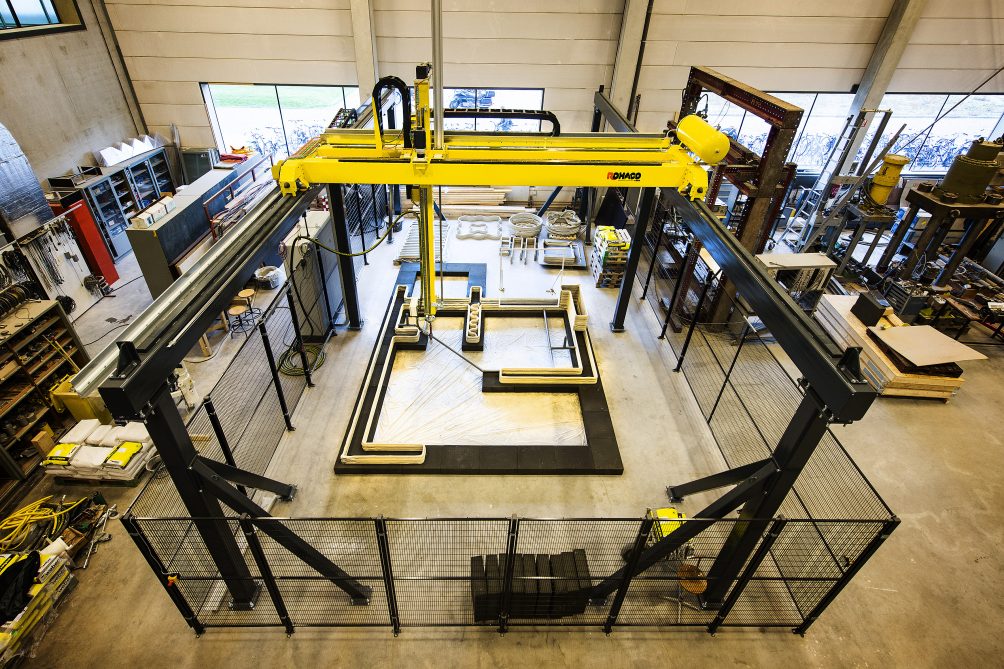
Photo: Rien Meulman
More research needed
Despite the fact that the printer already works, a lot of research is still needed before it can be used on a large scale. The question is: Will the printer or any other robots be used on construction sites or in factories? “It has both advantages and disadvantages,” says Wolfs. “On a construction site, the robot can take over heavy work from people. In addition, a machine is less affected by wind and weather. In a factory, robots could already make parts of a house. These would then be taken to the construction site and assembled quickly, a sort of pre-fab. According to the researcher, the first option saves a lot of transport costs, “but I think we can guarantee higher quality products in a factory because it is a controlled environment.
The two construction methods can also coexist. “Not all houses are built in the same way now,” says Wolfs. In any case, the innovations now focus on buildings and civil applications, such as houses and bridges. “These are still relatively small structures that make it easier to test the technology. What’s more, there is a large housing shortage so there is also a need to do something about it.” In addition, there is a shortage of construction professionals. “The robot can also fill this gap.”
Different materials
To build a house, more materials are needed than just concrete. “There are also research groups that look at the 3D printing of glass, steel or insulation material,” he says. “The print head then has different nozzles from which different materials emerge. Because we work from a 3D model, the printer knows exactly where which material has to come from.” In addition, in the future it will also be possible to look at materials with different functionalities in the future. Wolfs: “For example, there is also concrete that is translucent.”
Greater sustainability
An important advantage of a 3D printer is that it lays down material very accurately and therefore wastes less. “We actually use less material with this method,” says Wolfs. For the construction of a house, a box is often made and the concrete is poured into it. “The amount of concrete is then the same everywhere, although there may be places where the strength is much less and therefore less concrete is needed. With the printer we can vary the thickness much more easily.” According to Wolfs, these adjustments are badly needed to relieve the pressure of construction on the climate. “It is a sector with relatively high CO2 emissions. We can bring that down a bit this way.”
In the coming period, Wolfs will investigate the various aspects of 3D printing even further. “We’re going to look at the possibilities of making the material more sustainable. We also want to look at the design of the 3D model to ensure that we handle the material as optimally as possible,” he explains. Finally, the researchers are going to look at the possibility of reinforcing the concrete automatically. “Concrete structures often contain steel rods and nets to ensure that the concrete can withstand not only pressure but also tensile force,” he says. “We want to see how we can also print this reinforcement so that the steel doesn’t have to be put into the concrete manually.”
A new mindset
To use 3D printers or any other robots in the future, Wolfs believes that the way of thinking in construction must change. “Right now the construction process is fairly fragmented and different professionals take on different parts of the process. I think that in the future the professionals will work more together in an integrated fashion,” says Wolfs. “That’s easier to do if a robot is involved.”
Curious about the other specialized robots at the Eindhoven University of Technology High Tech System Center? Read previous articles here.


